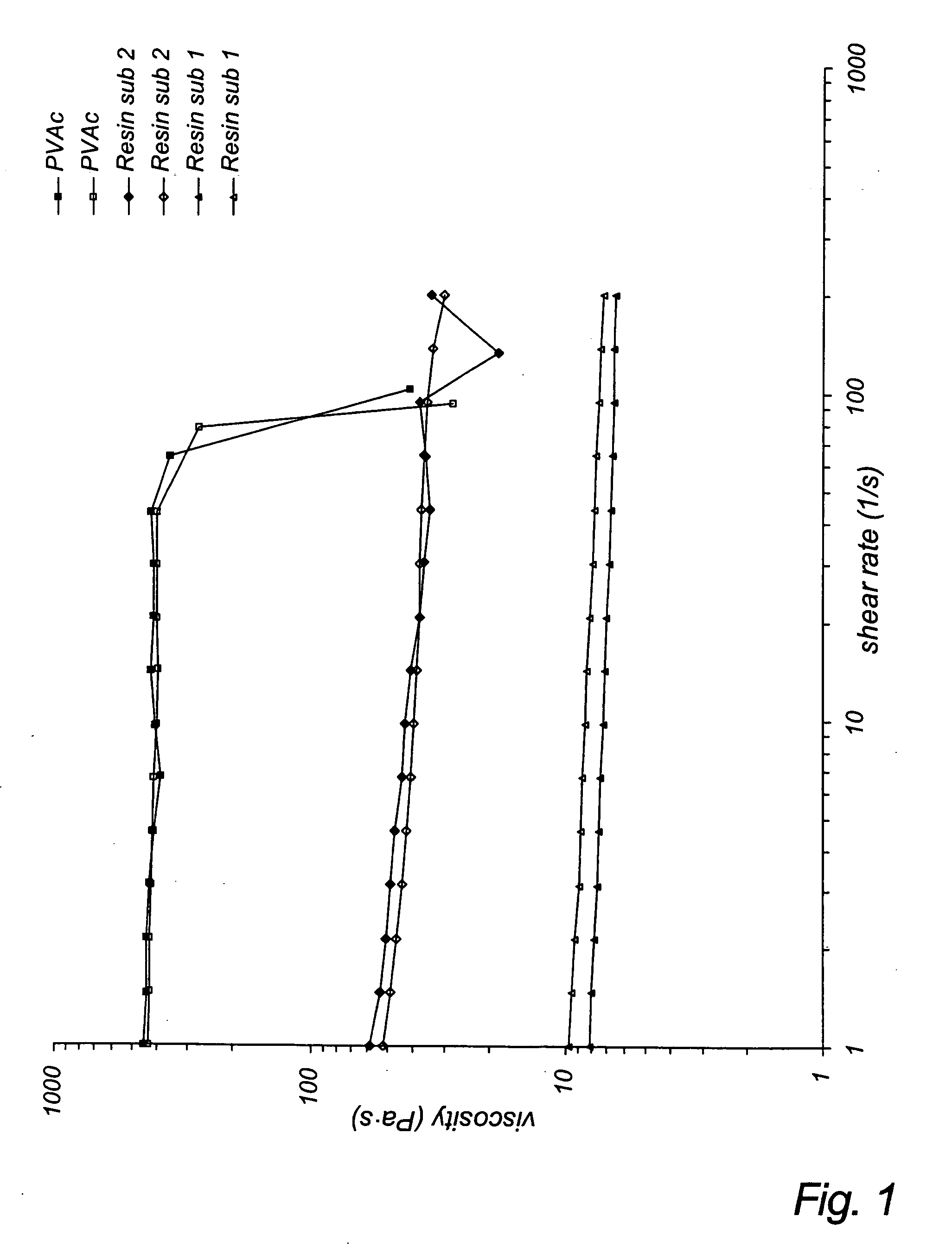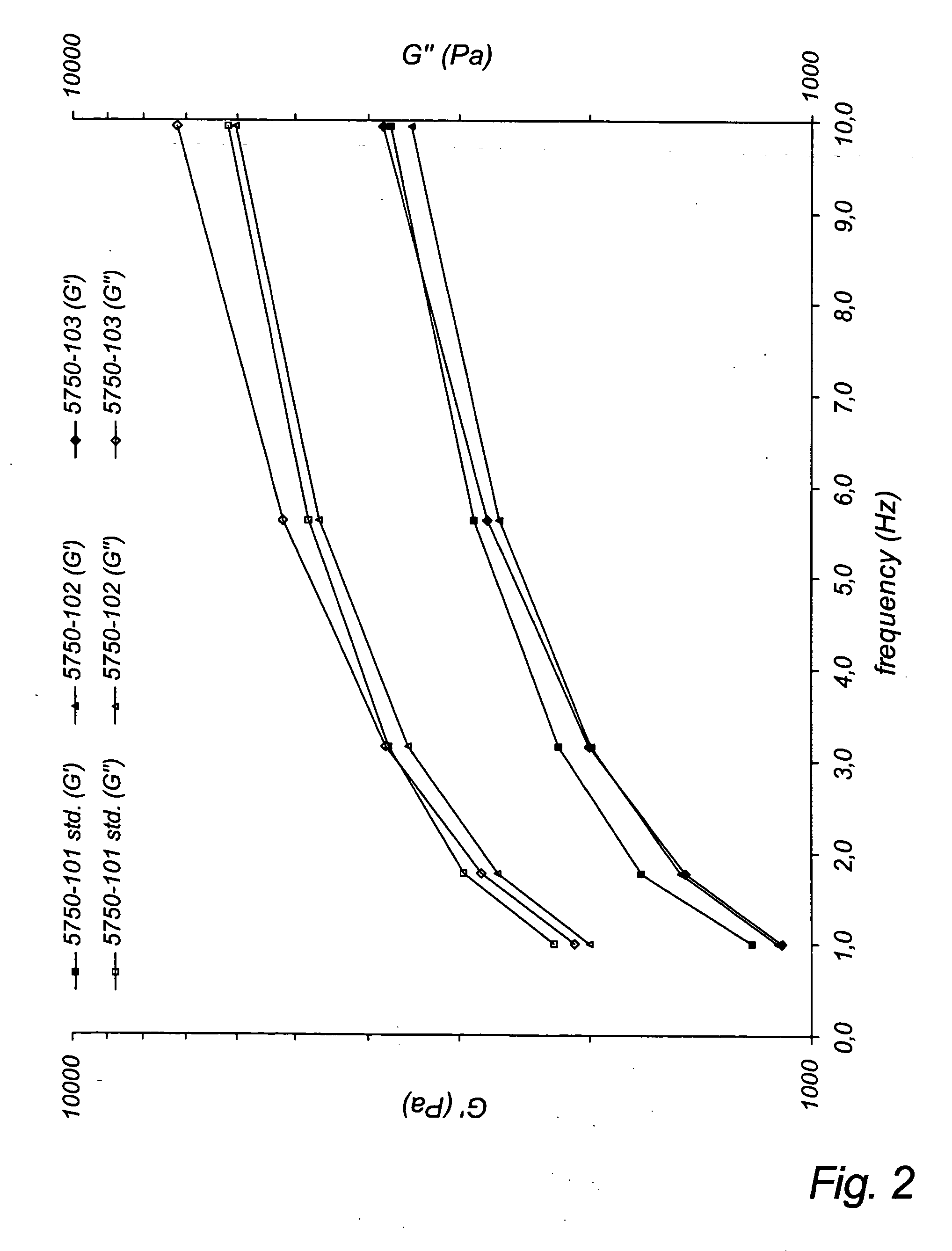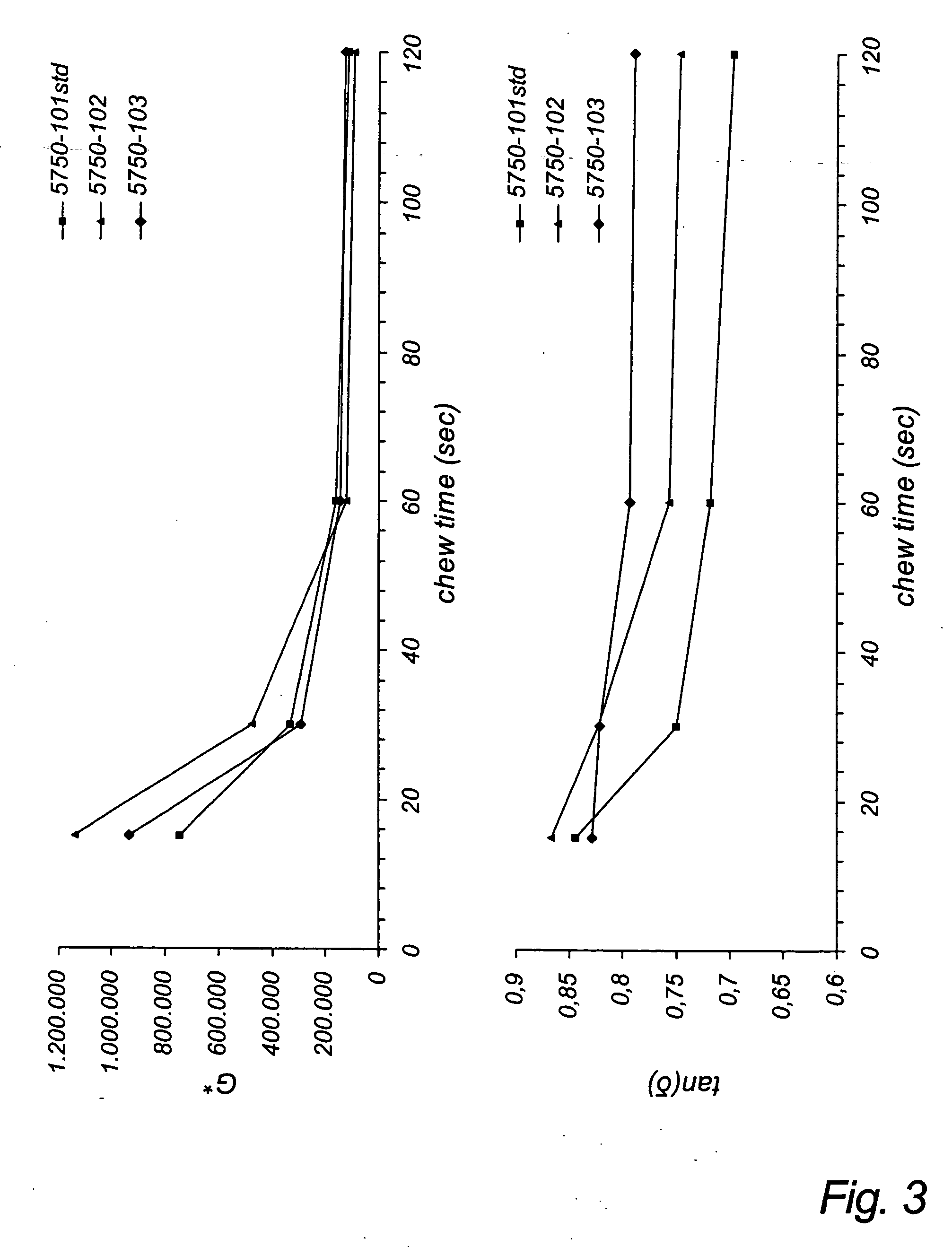Degradable resin substitute for chewing gum
- Summary
- Abstract
- Description
- Claims
- Application Information
AI Technical Summary
Problems solved by technology
Method used
Image
Examples
example 1
[0133] Molecular Weight (Mn) and a Glass Transition Temperature of Poly(Vinyl Acetate)
[0134] GPC and DSC measurements were performed in order to evaluate the number average molecular weight (Mn) and a glass transition temperature (Tg) of a poly(vinyl acetate) (PVAc) resin typically used as a gum base ingredient. The average molecular weight (Mn) of the PVAc was 5,130 g / mol and the glass transition temperature (Tg) was 33.degree. C.
example 2
[0135] Model Compounds
[0136] In order to identify the proper copolymer ratio that would create a degradable material with similar thermal characteristics to PVAc, a series of reactions were conducted at two target molecular weights, namely 3,000 g / mol and 5,000 g / mol, varying the monomer feed ratios. The following is a representative example of the method used for the model copolymerizations.
[0137] All glassware and stir bars were dried at 200.degree. C. overnight prior to use. Model compound polymerizations were carried out neat in 40 ml test tubes equipped with 24 / 40 joints. The proper amounts of .epsilon.-caprolactone (CAP) and D,L-lactide (DLL) monomer and stannous octoate (SO) catalyst (1.4.times.10.sup.-4 mol SO / mol monomer) were added to the reaction vessel along with a small teflon-coated stir bar.
[0138] A summary of the DSC results of the above model compound polymerization is shown in Table 1. The Tg of the resulting material decreases with increasing CAP content in the fe...
example 3
[0139] Large Batches for Gum Base Analysis
[0140] Two large batches of copolymer were synthesized with target molecular weights of 3,000 g / mol and 5,000 g / mol with monomer feed ratios both of 10% CAP. As before, all glassware and stir bars were dried at 200.degree. C. overnight prior to use. Both large-scale reactions were conducted in a 11 reaction kettle fitted with a three neck cap. The proper amounts of CAP and DLL monomer were added to the reaction vessel in the proper ratios as indicated in Table 2.
[0141] DSC and GPC analysis of the resulting material indicated the Tg of the copolymers to be 23 and 31.degree. C., while the molecular weight was found to be 3,500 and 5,600 g / mol, respectively.
[0142] DECGATE .sup.13C NMR analysis of the resulting material indicated a 9,3 and 7.6 mol % CAP incorporation in the copolymers.
2 TABLE 2 % CAP in Feed Tg Mn 3K 9.3% 23 3,500 5K 7.6% 31 5,600
PUM
| Property | Measurement | Unit |
|---|---|---|
| Angle | aaaaa | aaaaa |
| Angle | aaaaa | aaaaa |
| Angle | aaaaa | aaaaa |
Abstract
Description
Claims
Application Information
 Login to View More
Login to View More - R&D
- Intellectual Property
- Life Sciences
- Materials
- Tech Scout
- Unparalleled Data Quality
- Higher Quality Content
- 60% Fewer Hallucinations
Browse by: Latest US Patents, China's latest patents, Technical Efficacy Thesaurus, Application Domain, Technology Topic, Popular Technical Reports.
© 2025 PatSnap. All rights reserved.Legal|Privacy policy|Modern Slavery Act Transparency Statement|Sitemap|About US| Contact US: help@patsnap.com



